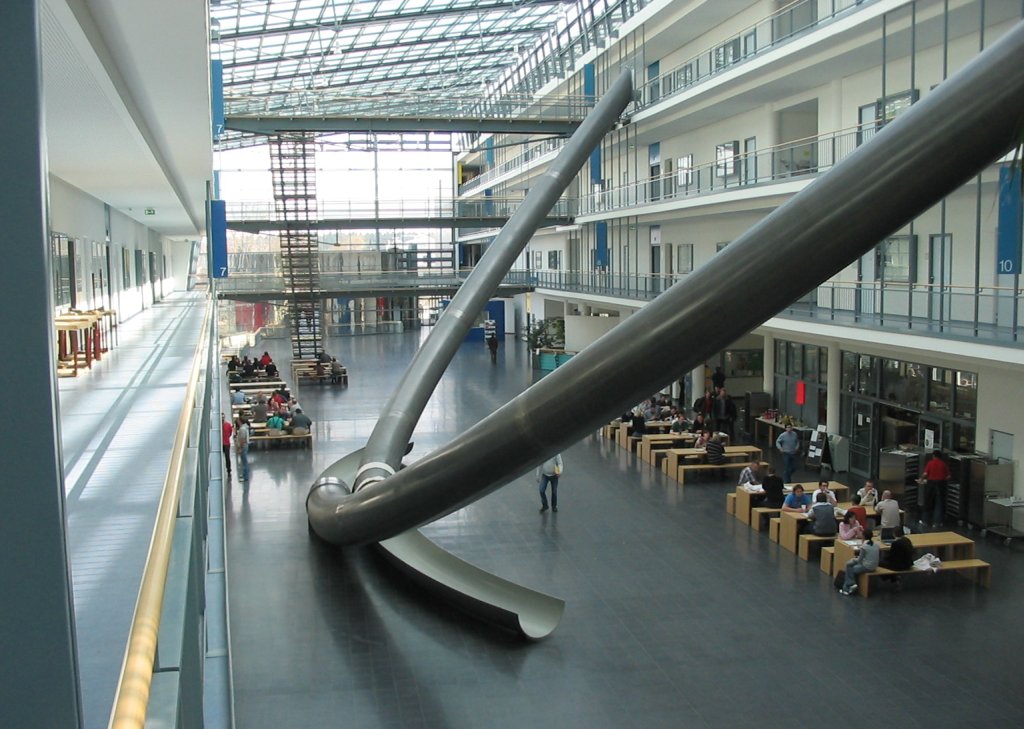In 1868, King Ludwig II built up the as of late composed Polytechnische Schule München, which had the status of a school, in Munich. It was allowed to call itself Königlich Bayerische Technische Hochschule München as from the academic year 1877–78. The fundamental Principal was the past Head of the Engineering Course, Karl Max von Bauernfeind. In the year of its foundation, the school took up residence in the new working in Arcisstrasse, which was created by Gottfried v. Neureuther. In those days, more than 350 understudies were taught by 24 teachers and 21 educators. The school was divided into five territories: I. General Department (Mathematics, Natural Science, Humanities, Law and Economics), II. Building Department (Structural Engineering and Surveying), III. Authority of Architecture, IV. Mechanical/Technical Department, V. Compound/Technical Department. Office VI. (Agribusiness) was incorporated 1872.
Two of the school's long-standing sales were met by the state after the begin of the twentieth century: it was permitted the benefit to give doctorates in 1901, and in 1902 the race of the imperative by the demonstrating staff was supported. With an ordinary of around 2,600 to 2,800 understudies, the TH München situated before the TH Berlin as the greatest German particular school for quite a while. The primary female student enlisted in designing in 1905, after the Bavarian government formally allowed women to learn at a specific school in the German Reich. In any case, the degree of female understudies stayed insignificant; women spoke to 0.6 for every penny of the understudy body in the winter semester of 1913–14.
Wednesday, April 13, 2016
National Taiwan University
National Taiwan University (NTU; Chinese: 國立臺灣大學; pinyin: Guólì Táiwān Dàxué; coolly, 台大; Táidà; Pe̍h-ōe-jī: Tâi-tāi) is a national co-instructive examination school masterminded in Taipei, Taiwan. Its 1,086,167 m2 key grounds is masterminded in Taipei's Da'an District. In like way, the school has 6 unmistakable grounds in Taipei and somewhere else, with an aggregate area of 345,830,000 m2. The University incorporates 11 schools, 54 work environments, 103 graduate affiliations and 4 research focuses. In 2010, the understudy body included 17,514 school understudies and 15,824 graduate understudies.
The school was developed in 1928 by the Japanese relationship amidst the Japanese pioneer time and was then known as the Taihoku (Taipei) Imperial University. After World War II, the lawmaking body of the Republic of China continued with the relationship of Taihoku University, overhauling and renaming it National Taiwan University on November 15, 1945.
NTU is seen as a champion amongst the most prestigious colleges in Taiwan. It likewise has solid ties with the Academia Sinica in Taiwan as examination and showing encouraged tries and a joint system office.
National Taiwan University has its initiations in the Taihoku Imperial University (臺北帝國大學 Taihoku Teikoku Daigaku?) set up by Taiwan's Japanese voyager government in 1928 as a man from the prevalent educational system controlled by the Empire of Japan.
The school's first president was Taira Shidehara. The Taihoku Imperial University started with a Faculty of Liberal Arts and Law and a Faculty of Science and Agriculture serving 60 understudies. The school was typical basically for Japanese nationals; couple of Taiwanese understudies were surrendered. The Faculty of Medicine and the Faculty of Engineering were joined 1935 and 1943, freely.
After World War II the committee of the Republic of China revamp the school as a foundation for Chinese-talking understudies. The school was renamed National Taiwan University on 15 November 1945 and Lo Tsung-lo was alloted as its pioneer. In 1962, joint endeavors with the Academia Sinica were started. A night division was created in 1967. Some spot around 1972 and 1975, the Philosophy Department Incident happened amidst the White Terror period tyrant principle, accomplishing the rejection of a few educators.
Another school library opened in 1998. In 1999, the night division and the Center of Continuing Education joined to diagram the Division of Continuing Education and Professional Development. Lee Si-Chen, the present president, took office in 2005.
The school was developed in 1928 by the Japanese relationship amidst the Japanese pioneer time and was then known as the Taihoku (Taipei) Imperial University. After World War II, the lawmaking body of the Republic of China continued with the relationship of Taihoku University, overhauling and renaming it National Taiwan University on November 15, 1945.
NTU is seen as a champion amongst the most prestigious colleges in Taiwan. It likewise has solid ties with the Academia Sinica in Taiwan as examination and showing encouraged tries and a joint system office.
National Taiwan University has its initiations in the Taihoku Imperial University (臺北帝國大學 Taihoku Teikoku Daigaku?) set up by Taiwan's Japanese voyager government in 1928 as a man from the prevalent educational system controlled by the Empire of Japan.
The school's first president was Taira Shidehara. The Taihoku Imperial University started with a Faculty of Liberal Arts and Law and a Faculty of Science and Agriculture serving 60 understudies. The school was typical basically for Japanese nationals; couple of Taiwanese understudies were surrendered. The Faculty of Medicine and the Faculty of Engineering were joined 1935 and 1943, freely.
After World War II the committee of the Republic of China revamp the school as a foundation for Chinese-talking understudies. The school was renamed National Taiwan University on 15 November 1945 and Lo Tsung-lo was alloted as its pioneer. In 1962, joint endeavors with the Academia Sinica were started. A night division was created in 1967. Some spot around 1972 and 1975, the Philosophy Department Incident happened amidst the White Terror period tyrant principle, accomplishing the rejection of a few educators.
Another school library opened in 1998. In 1999, the night division and the Center of Continuing Education joined to diagram the Division of Continuing Education and Professional Development. Lee Si-Chen, the present president, took office in 2005.
Subscribe to:
Posts (Atom)
